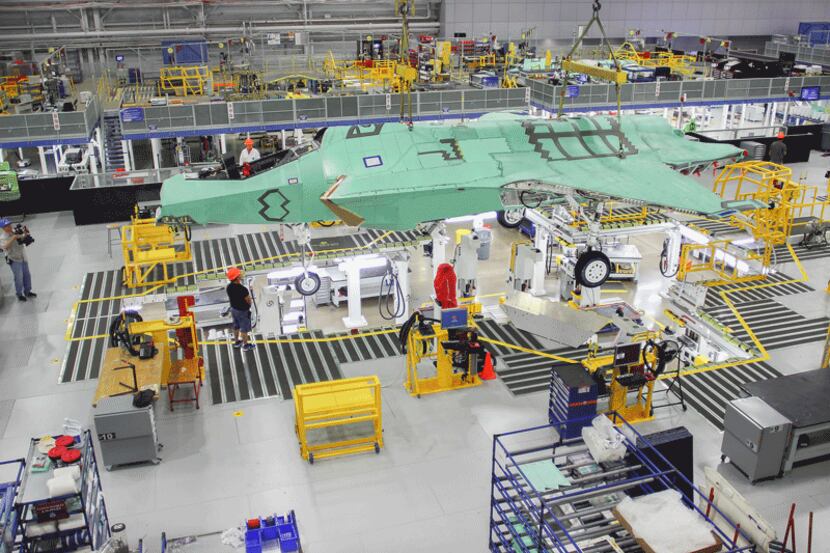Lockheed Martin’s Fort Worth operation and the F-35s it churns out support tens of thousands of jobs and pour billions of dollars into the North Texas economy.

Company at a glance
Assembled F-35s roll off a mile-long production facility in Fort Worth, where Lockheed’s aeronautics headquarters is home to about 13,000 employees. The aeronautics division is Lockheed’s largest, and F-35 sales represented 23% of the company’s total annual revenue in 2016.
Ripple effects across North Texas
Lockheed's economic impact on North Texas starts with its 13,000 local employees, but it goes much further. The Fort Worth plant is a magnet for suppliers, sales and technical workers, who along with Lockheed's employees pump billions of dollars into the regional economy.

Costs soar
Cost estimates for the F-35 program ballooned in its early years as specifications for the next-generation fighter grew and an aggressive development schedule ran into delays. But since a 2011 restructuring, costs for the program have been trending downward. They'll still end up well above initial estimates, but that's not uncommon for complex, multi-decade military programs.
An international affair
The United States is by far the largest purchaser of F-35s, with the Air Force, Navy and Marines all set to receive versions of the jet. But the cost of the program is also being funded in part by eight partner nations that will also purchase F-35s of their own. Israel, Japan and South Korea have signed up to purchase F-35s.
Three takes on the F-35
Bernard Weinstein, economist at Southern Methodist University’s Cox School of Business: “Defense has always been a pretty big industry in D-FW, particularly on the Fort Worth side of the metroplex. There are few companies paying as high of average wages as Lockheed Martin. Those 13,000 jobs are supporting a lot of people and a lot of other economic activity across D-FW. If you’re talking about 13,000 people working at an Amazon warehouse vs. 13,000 people working at Lockheed Martin, there’s a huge difference in economic impacts.”
—
Richard Aboulafia, vice president of analysis at Teal Group Corp.: “There’s been some progress, but there are a couple of big questions. Basically, will they get to the [production] rate they say they need to get [the cost] down further. The problem in all of this is even if they get it to $80 million, it’s still an expensive fighter, and the market for expensive fighters isn’t that big. You’re asking everybody to say ‘We think this plane is so effective that we’re willing to pay twice the price for half the number [of jets].’ The good news is that’s what we’re seeing people do.”
—
Conor Shine, aviation writer, The Dallas Morning News: ”Lockheed’s F-35 program is one of the cornerstones of D-FW’s massive aerospace and aviation industry, a key engine for the region’s economy. While the program’s costs and lengthy development process have generated scrutiny, recent years have shown improvements on both of those fronts. As more and more jets roll off the Fort Worth assembly line over the next decade, it’s hard to deny the positive impact the program and the thousands of high-paying jobs it supports have had on North Texas.”
SOURCES: Lockheed Martin; U.S. Government Accountability Office. Production facility image courtesy of Lockheed Martin.

